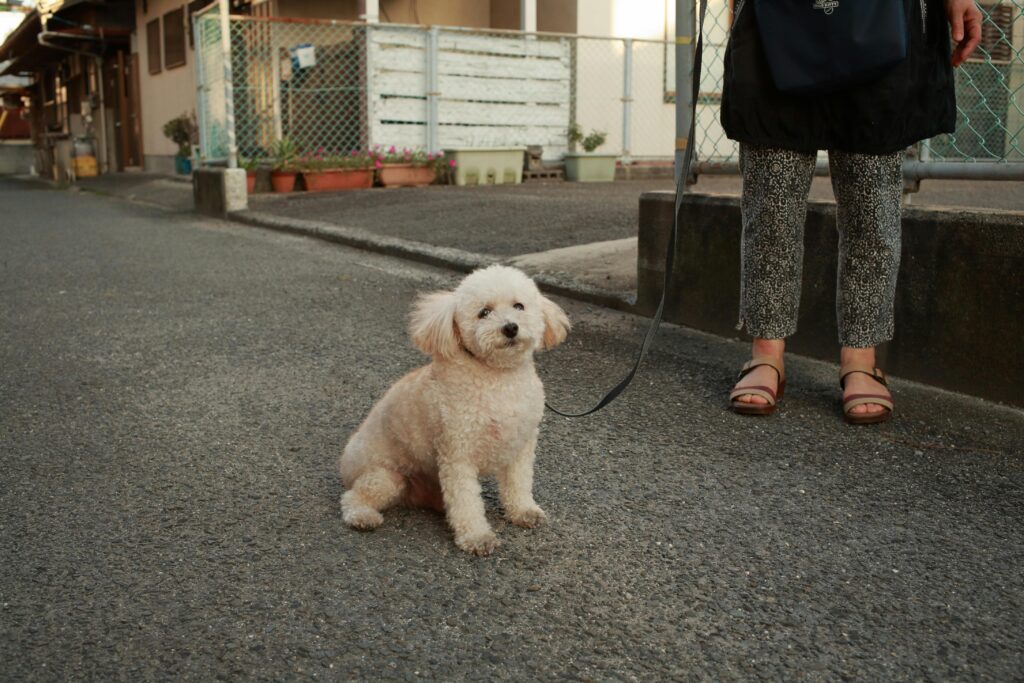Fall is just around the corner, and that means cooler temperatures, colorful trails, and perfect weather for outdoor adventures with your dog. But if your walks feel more like a tug-of-war than a bonding experience, it’s time to fix that before your big autumn outings begin.
Loose leash walking isn’t just about comfort. It’s about safety, communication, and mutual respect. At Off Leash K9 Training Kansas, we help dog owners every day who are frustrated by pulling, lunging, or distracted walking. The good news is, with consistency and structure, your dog can learn to walk calmly at your side, without turning every walk into a battle.

Why Loose Leash Walking Matters
You may think pulling on the leash is just an annoyance, but it can actually lead to:
- Joint strain or injuries (for both dog and handler)
- Increased reactivity due to heightened arousal
- Missed training opportunities
- Unsafe scenarios near traffic, cyclists, or strangers
Teaching your dog to walk politely on a loose leash is one of the most beneficial skills you can invest in, and it makes all those fall trails, apple orchards, and pumpkin patch visits much more enjoyable.
Understand the Difference: Loose Leash vs. Heel
Many dog owners confuse “heel” with “loose leash walking.” They’re not the same.
- Heel: A formal command where your dog walks precisely at your side, usually with their shoulder aligned to your leg and constant attention on you.
- Loose Leash Walking: A relaxed, informal walk where the leash remains slack, but your dog is free to sniff and explore within boundaries.
Both are valuable, but loose leash walking is the go-to skill for everyday outings. If you’re training more than one dog, it’s even more important to establish loose leash expectations early. Check out our post on training multiple dogs to walk nicely together to see how structured walking works in multi-dog households.
Step-by-Step: How to Teach Loose Leash Walking
1. Start Indoors or in a Low-Distraction Area
Your living room or backyard is the ideal place to introduce the concept. Begin with just a few steps at a time.
2. Use the Right Equipment
We recommend a standard 4–6 foot leash and either a slip lead or properly fitted prong collar for training, not retractables. This gives you better control and prevents mixed signals.
3. Reward Position, Not Pulling
Mark and reward when your dog walks with a slack leash, even for a few seconds. Stop moving if the leash tightens.
4. Use Direction Changes to Refocus
If your dog pulls ahead, stop, call them back, or change direction. This teaches them that you control the walk, not them.
5. Keep Sessions Short and Frequent
Five focused minutes is better than a frustrating half-hour. Build your dog’s understanding gradually.
Add Structure to Your Walks
Loose leash walking isn’t just about mechanics. It’s about mindset. Here’s how to keep things calm and focused:
- Start the walk with a “sit” and calm energy
- Keep a consistent pace and don’t allow zig-zagging
- Use the “leave it” command when distractions arise
- Mix in short heel sessions to boost focus
- End walks on a positive note with praise or play
If your dog pulls toward every squirrel or barking dog, fall outings can become stressful. Our Basic Obedience Program helps eliminate that frustration by teaching reliable focus and leash manners from the ground up.
Practice in Real-Life Environments
Once your dog understands the basics, begin practicing in new places:
- Neighborhood sidewalks
- Storefronts or pet-friendly plazas
- Park paths and trailheads
- Downtown areas (if safe) with moderate distractions
Use these environments to reinforce calm behavior, not test your dog’s limits. Stay at a distance where they can succeed and slowly reduce space as confidence grows.
When Leash Reactivity Enters the Picture
If your dog lunges, barks, or becomes overstimulated when passing other dogs or people, they may be experiencing leash reactivity. This is often caused by frustration, fear, or poor impulse control, and it’s something we work on regularly in our training programs.
The American Kennel Club offers great insight into equipment that can help reduce pulling, but behavior change ultimately comes from training, not tools alone.
Ready for Fall Adventures? Take the Lead.
Loose leash walking is a game-changer. It opens the door to hikes, festivals, markets, and road trips, all without chaos at the end of the leash.
If you’re ready to transform your walks and get your dog adventure-ready, our trainers at Off Leash K9 Training Kansas are here to help. Reach out through our contact page to get started before fall is in full swing.
